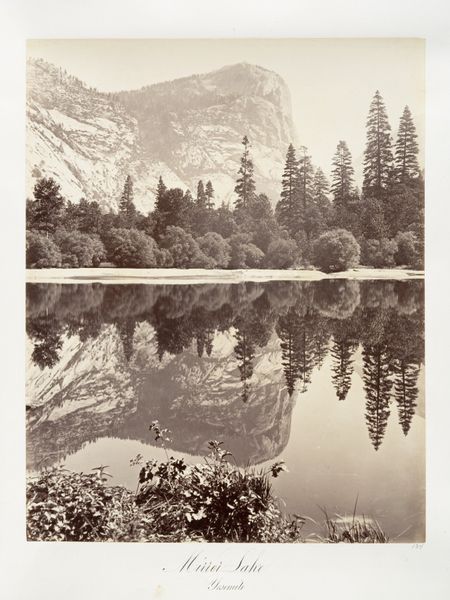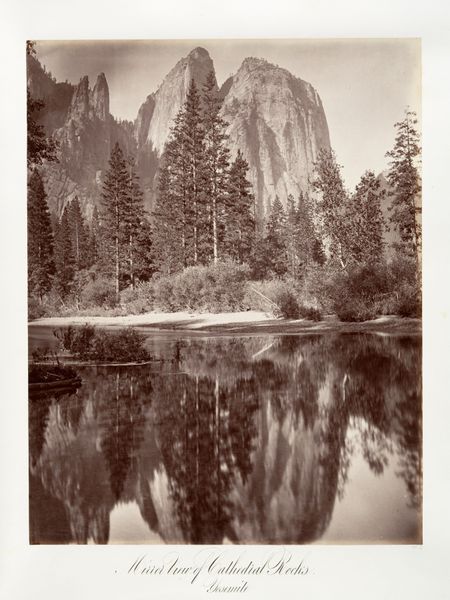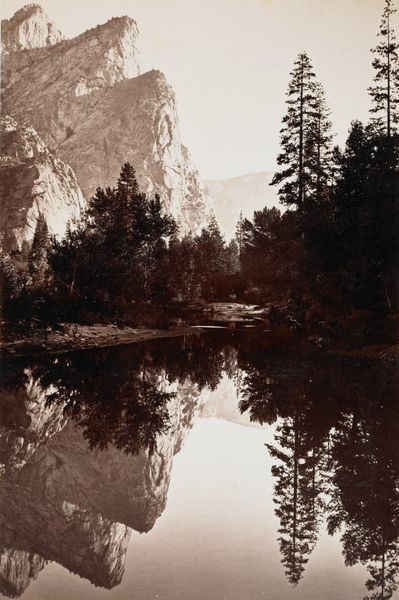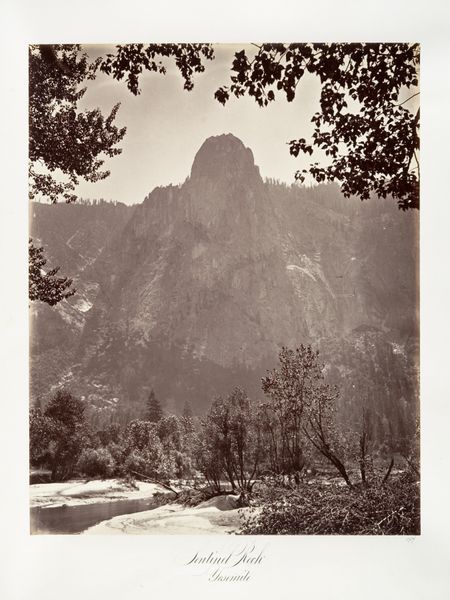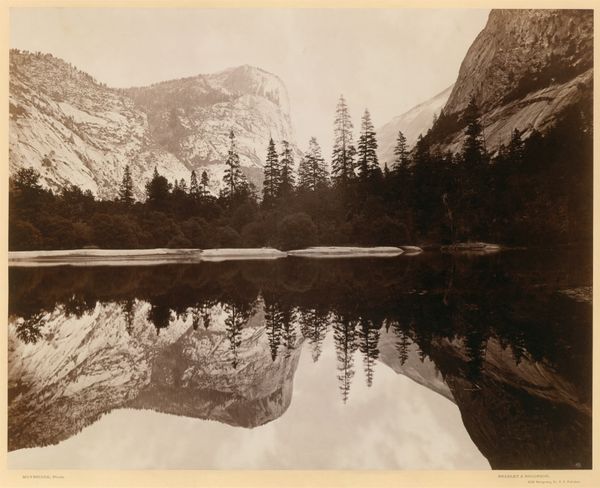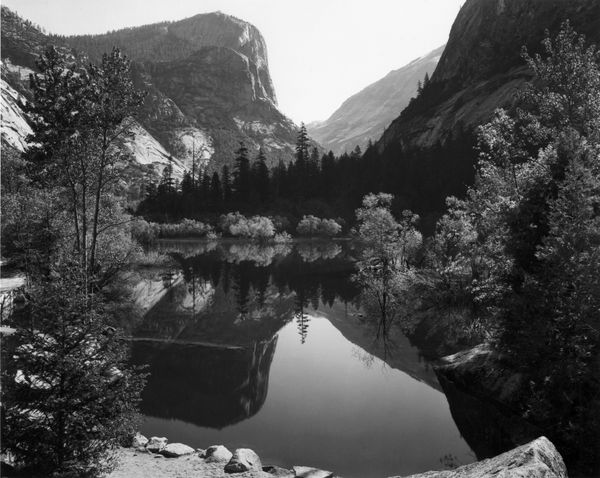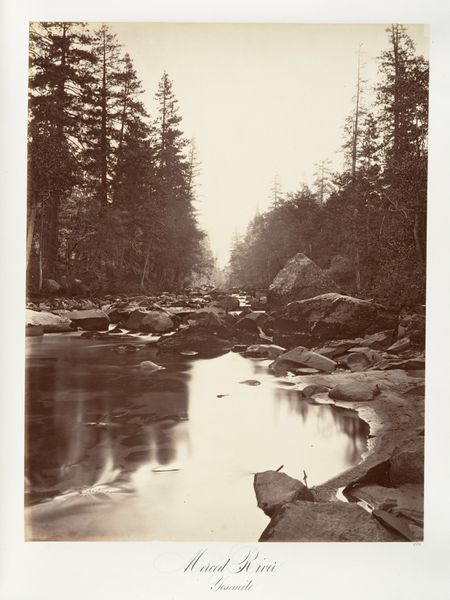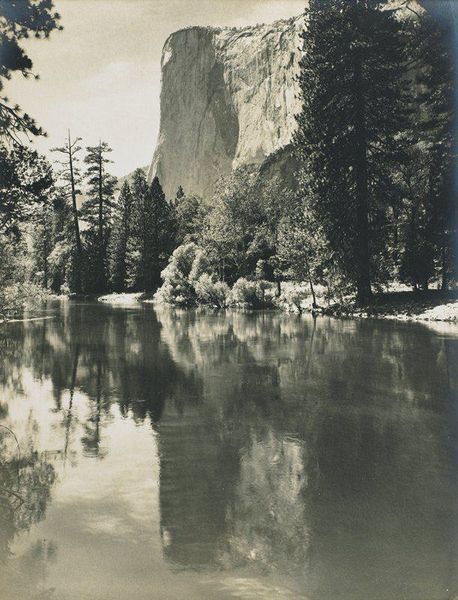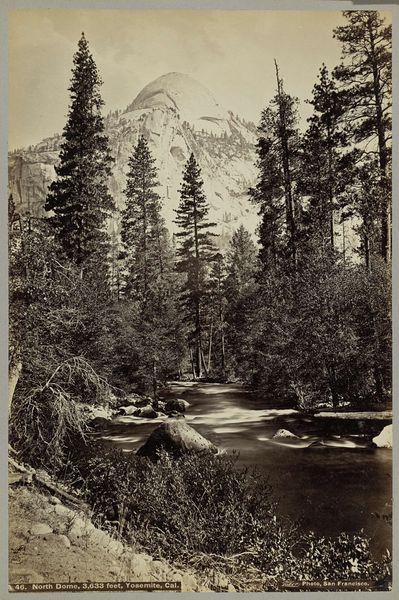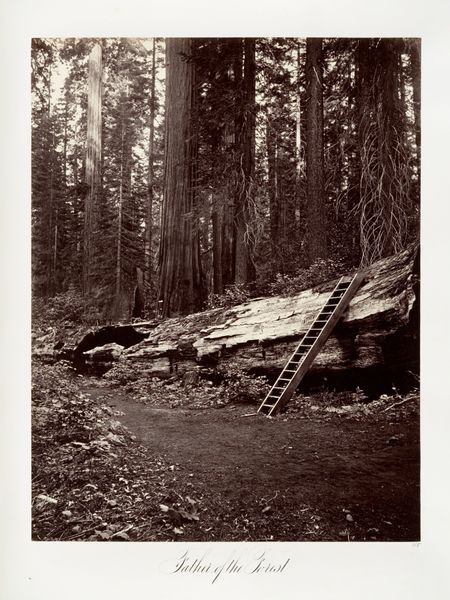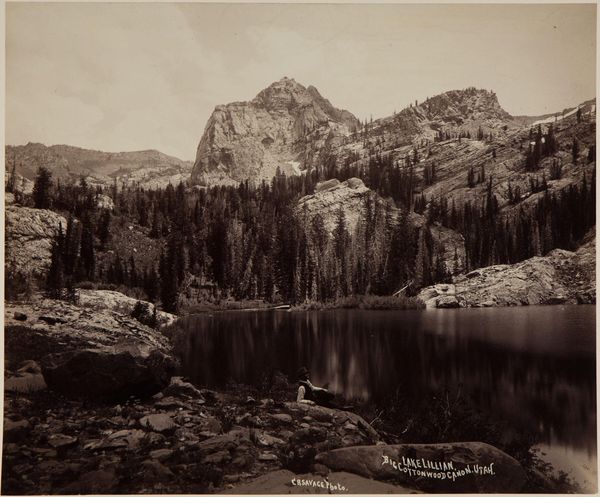
Mirror View of Sentinel Rock, Yosemite 1870 - 1874
0:00
0:00
print, photography, gelatin-silver-print
# print
#
landscape
#
river
#
photography
#
mountain
#
gelatin-silver-print
#
hudson-river-school
#
realism
Dimensions: Image: 13 1/4 × 10 1/2 in. (33.7 × 26.6 cm) Sheet: 16 5/8 × 13 7/16 in. (42.2 × 34.2 cm)
Copyright: Public Domain
Curator: Carleton Watkins's gelatin silver print, "Mirror View of Sentinel Rock, Yosemite," dating from between 1870 and 1874, offers a stunning vista. Editor: Whoa, I immediately feel this hush. You know, like when you step into a forest, and the world just... quiets down? Curator: Precisely. Watkins was deeply invested in capturing not just the landscape but the experience of being within it. He aimed to visualize the sublime. His work often resonated with the Hudson River School painters. The image captures Sentinel Rock rising majestically over a tranquil river. Watkins emphasizes the stillness by showcasing the flawless reflections of the trees. Editor: It's almost ghostly, right? All those mirrored trees... it gives the image this surreal vibe. And look at how he framed it. Those trees on the left and right practically invite you into the scene. I feel like I could step right into that mirrored world. Does that make sense? Curator: It does. It is also important to understand that while many romanticize Watkins as a lone explorer, it is critical to address how photography, especially landscape photography, participated in westward expansion, which was often built upon the forced removal of Indigenous communities from these same lands. Editor: Absolutely. You can't separate the beauty from the context. I'm just sitting here imagining what it must have been like to lug all that equipment around in the 1870s to capture that shot! A technical feat that feels very different with what it signifies historically. Curator: Indeed, and that tension is, I think, what makes the image still so relevant. It encapsulates an ideology that has shaped the American landscape. Editor: Well, I came for the pretty picture, and I'm leaving with a whole lot more to think about. It's haunting and beautiful. And complicated. Curator: That is the power of art, I think: to provoke those very thoughts and dialogues.
Comments
No comments
Be the first to comment and join the conversation on the ultimate creative platform.
